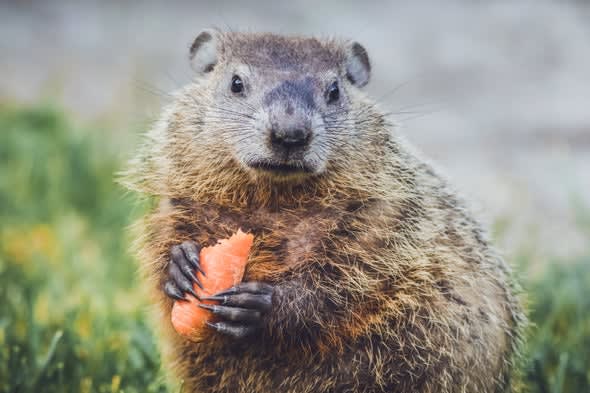What Time of Day Do Groundhogs Come Out to Feed
How to Get Rid Of Groundhogs
If you have Groundhogs, follow this guideline to trap and get rid of Groundhogs.
The Groundhog, also known as a Woodchuck, is a member of the squirrel family. Groundhogs are found in open pastures, woodlots, fields, ditches, and roadsides. During early spring, groundhogs are most active during the warm parts of the day. However, during the warmer spring and summer months, the day is spent in their cool burrows, and feeding occurs during the very early morning and dusk.
Groundhogs begin hibernation in October and emerge in February. Their burrow system is located about 2-4 feet underground and may extend 15-25 feet horizontally. The main groundhog nest chamber is usually located at the end of the burrow. The main entrance is seen as a mound of fresh earth around the opening.
Groundhogs are active by day, especially in the early morning and late afternoon. In residential areas, they may be found beneath homes, patios, under decks, garages, and stored lumber. Groundhogs construct burrows and eat a broad range of vegetation. An adult consumes between 1-1/2 lbs. of vegetation a day. One or two groundhogs are capable of eating into your garden almost overnight.

Groundhogs weigh between 4-14 pounds, and are stocky, giving the appearance of crouching close to the ground as it moves around. The body fur is long, grizzled grayish-brown in color, and coarse. In late summer or early fall, groundhogs put on a heavy fat layer, which sustains them through hibernation.
Get Rid Of Groundhogs
Groundhogs may be controlled in two ways: Fumigation & Trapping
Fumigation
Fumigation is most practical when there are several groundhogs present in the den. A gaseous cartridge such as the Giant Destroyer or Revenge Smoke Bombs would be recommended.
These cardboard cylinders can be ignited and placed in the burrow system. Also, since sparks may occur, these cartridges should not be used inside, under buildings, or near combustible items. Fumigation is more effective when the soil is damp (spring and fall) when the soil is dry.
- Locate all entrances surrounding active burrows.
- With a shovel or spade, cut clumps of sod slightly larger than each burrow entrance, placing it nearby.
- Follow the written label instructions on the cartridge for ignition and placement.
- Kneel at the main burrow entrance, light the fuse, and immediately place the cartridge as far down the hole as possible. According to directions, please do not throw it in the hole; put it in.
- Use a shovel handle or stick to push the cartridge farther down the burrow without causing large amounts of loose soil to fall into the burrow because this may smother the cartridge.
- Immediately seal the burrow by placing the piece of precut sod, grass side down over the opening, and tramping it down slightly to make a tight seal.
- Wait three to four minutes and watch nearby holes. Seal them if smoke is escaping.
- Repeat steps 1 through 4 until all groundhog burrows are closed.
- Within two to three days, check to see if the groundhog burrow is reopened and retreat the area if necessary.
- Fumigation should not be done after September/October since most will be in hibernation. The hibernating chamber is "walled off."
Trapping
Live traps and Conibear traps (we don't carry them on-line, however) Using a trap such as a Raccoon Sized Traps
- The live groundhog trap should be set in the trail immediately in front of the main burrow entrance and baited with apple slices, carrots, or lettuce.
- Stones, logs, or twigs placed (funneled) between the burrow opening and the trap would funnel the animal into the trap.
crawfordwomaid1979.blogspot.com
Source: https://diypestcontrol.com/groundhog.htm
0 Response to "What Time of Day Do Groundhogs Come Out to Feed"
Post a Comment